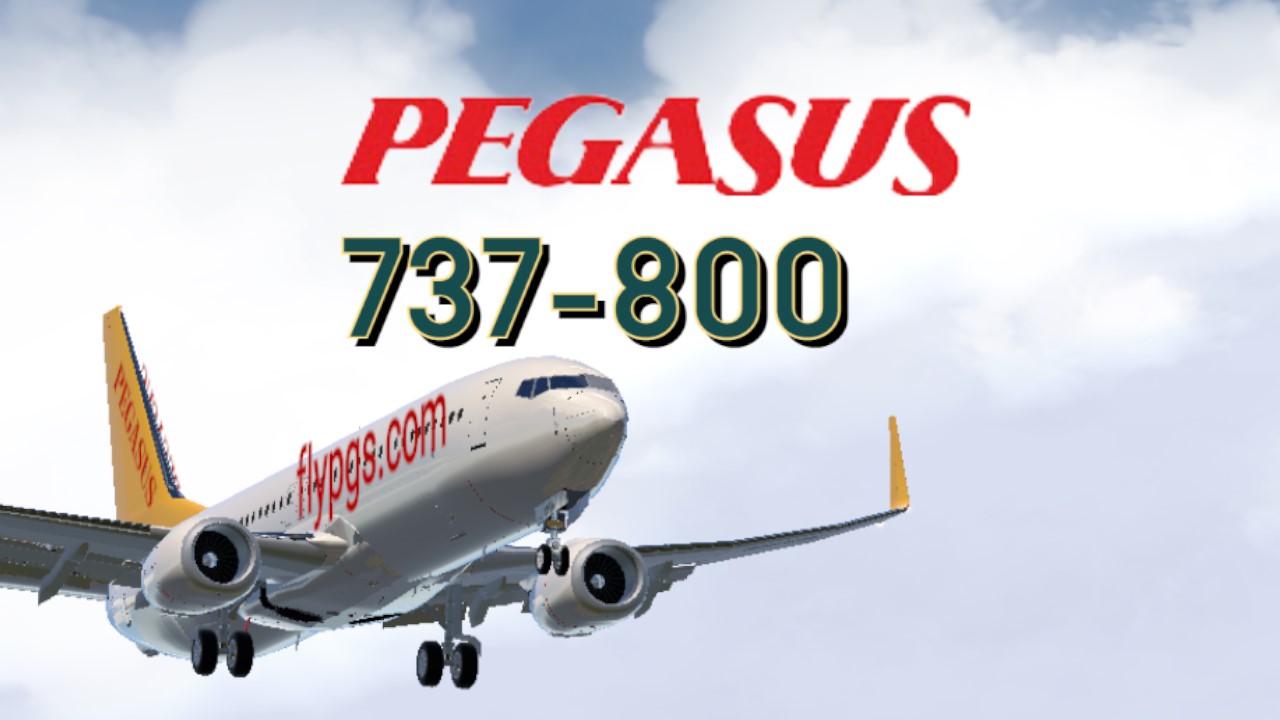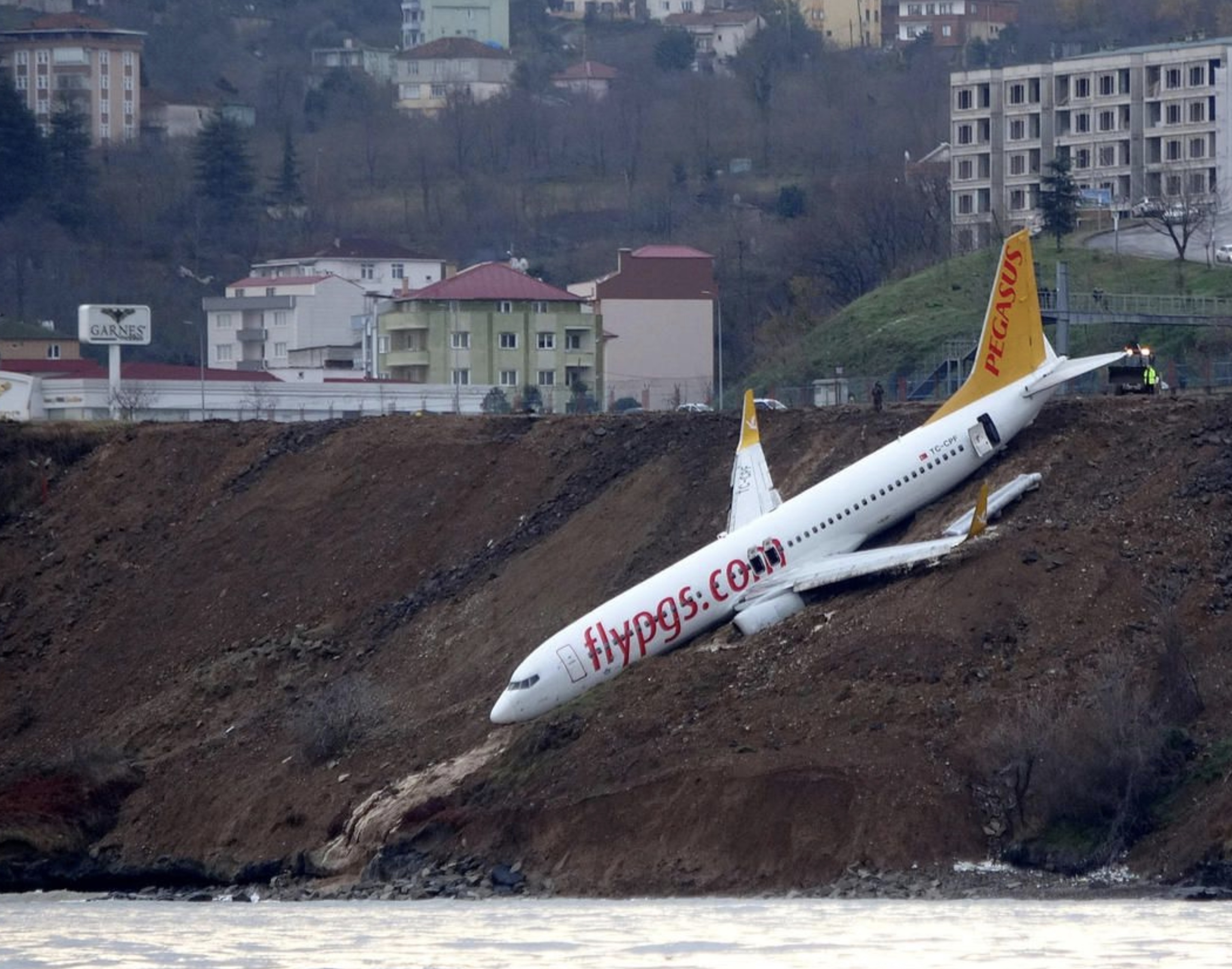Finally, A livery of Necc95 Boeing 737-800. Sorry it's not Mobile Friendly.
About 737-800
The Boeing 737-800 is a stretched version of the 737-700. It replaced the 737-400. The Boeing 737-800 competes primarily with the Airbus A320. The 737-800 seats 162 passengers in a two-class layout or 189 passengers in a one-class layout. The 737-800 was launched on September 5, 1994.[4] Launch customer Hapag-Lloyd Flug (now TUI fly Deutschland) received the first one in April 1998.[51]
Following Boeing's merger with McDonnell Douglas, the 737-800 also filled the gap left by Boeing's decision to discontinue the McDonnell Douglas MD-80 and MD-90 aircraft. For many airlines in the U.S., the 737-800 replaced aging Boeing 727-200 trijets.
The 737-800 burns 850 US gallons (3,200 L) of jet fuel per hour—about 80 percent of the fuel used by an MD-80 on a comparable flight, while carrying more passengers.[52] The Airline Monitor, an industry publication, quotes a 737-800 fuel burn of 4.88 US gal (18.5 L) per seat per hour, compared to 5.13 US gal (19.4 L) for the A320.[53] In 2011, United Airlines— flying a Boeing 737-800 from Houston to Chicago—operated the first U.S. commercial flight powered by a blend of algae-derived biofuel and traditional jet fuel to reduce its carbon footprint.[54]
In early 2017, a new 737-800 was valued at $48.3 million, falling to below $47 million by mid-2018.[55][unreliable source?] By 2025, a 17-year-old 737-800W will be worth $9.5 million and leased for $140,000 per month.[56][unreliable source?]
As of May 2019, Boeing had delivered 4,979 737-800s, 116 737-800As, and 21 737-800 BBJ2s, and has twelve 737-800 unfilled orders.[3] The 737-800 is the best-selling variant of the 737NG and is the most widely used narrow-body aircraft.[57] Ryanair, an Irish low-cost airline, is among the largest operators of the Boeing 737-800, with a fleet of over 400 of the -800 variant serving routes across Europe, Middle East, and North Africa.
About Pegasus Airlines
On 1 December 1989, two businesses, Net and Silkar, partnered with Aer Lingus to create an inclusive tour charter airline called Pegasus Airlines and services were inaugurated on 15 April 1990 with two Boeing 737-400s. In Greek mythology, Pegasus (Greek: ???as?? Pégasos, 'strong') was a winged horse sired by Poseidon, in his role as horse-god, and foaled by the Gorgon Medusa. However, four months after the launch, Iraq invaded Kuwait and the seven-month occupation that followed had a serious effect on Turkish tourism.[3] By 1992, tourists began returning to the country and Pegasus grew with the acquisition of a third 737-400. The airline leased a further two Airbus A320s to meet the summer demand.[3]
After two positive years, Aer Lingus and Net sold their shares in the company in 1994 to Istanbul-based Yapi Kredi bank, making Pegasus a purely Turkish company.[3]
On 4 September 1997, Pegasus placed an order for one 737-400 and one 737-800 from Boeing Commercial Airplanes, making it the first Turkish carrier to place an order for the Boeing 737 Next Generation. The airline also signed lease agreements for a further 10 737-800s from the ILFC.[3]
In January 2005, ESAS Holdings purchased Pegasus Airlines and placed Ali Sabanci as the chairman. Two months later, he changed the airline from a charter airline to a low-cost airline. In November 2005, Pegasus placed an order for 12 new 737-800s from Boeing, which was backed up with an order for a further 12 737-800s in November 2008. The latter order had flexibility, as the orders could be changed to the 149-seat 737-700 or the 215-seat 737-900 depending on market demand. In 2018, Pegasus tried to acquire an A380 but later cancelled the order.[3]
In 2007, Pegasus had reached a domestic market share of 15%, which grew to 27% in 2013.[4] In 2019, it carried a total of 29.87 million passengers.
In November 2011, Air Berlin and Pegasus Airlines launched Air Berlin Turkey, which was aimed at the charter market between Germany and Turkey.[5][6][7] The new airline however was absorbed into Pegasus Airlines on 31 March 2013.[8]
In 2012, Pegasus Airlines, the second-largest airline in Turkey, signed for up to 100 A320neo Family aircraft (57 A320neo and 18 A321neo models), of which 75 were firm orders. Pegasus became a new Airbus customer and the first Turkish airline to order the A320neo. This was the largest single commercial aircraft order ever placed by an airline in Turkey at that time and was announced on 18 December 2012 at a ceremony attended by Binali Yildirim, the Turkish Minister of Transport.[9] In June 2012, Pegasus Airlines bought 49% of the Kyrgyz air company Air Manas. On 22 March 2013, the air company operated its first flight under the brand name Pegasus Asia.[10]
The company offered 34.5% of its shares of stock to the public. The shares began to be traded at the Borsa Istanbul as BIST: PGSUS on 26 April 2013.[11]
In October 2016, Pegasus Airlines announced it was offering three of its aircraft on the ACMI and leasing markets, stating severely decreasing passenger numbers.[12]
Pegasus Airlines Flight 8622

Flight 8622 was a scheduled domestic flight from Esenboga International Airport, Ankara, to Trabzon Airport. There were 162 passengers and 6 crew on board. The aircraft landed at 23:26 local time (20:26 UTC). After landing, the aircraft veered left, skidded off the runway, and slid down a cliff.[1] The aircraft came to rest in a precarious position along the side of the cliff but did not slip into the sea due to the wet ground that caused the landing gear to be stuck in mud.[4] An emergency evacuation was ordered by the cabin crew.[5] The aircraft sustained considerable damage,[1] with the right engine detaching and falling into the Black Sea.[6][7] At the time, it was raining with visibility of 4 kilometres (2.5 mi).[2] Following the accident, Trabzon Airport was closed until 08:00 local time (05:00 UTC) on 14 January.[8] The aircraft was removed from the cliff face on 18 January. During the recovery operation, Trabzon Airport was closed, with aircraft being diverted to Ordu–Giresun Airport, Gülyali.[9] The aircraft was declared a write-off.
Pegasus Flight 2193
Flight 2193 operated within Turkey from Izmir Adnan Menderes Airport, Izmir to Istanbul without incident. At approximately 18:30 local time,[1] the plane attempted to land at Sabiha Gökçen in Istanbul in heavy rain and strong tailwinds.[6] A thunderstorm with strong wind gusts was passing through the area at the time of the accident.[5] Two other aircraft aborted their landing attempts at the same airport shortly before Flight 2193 landed.[9]
After what Turkey's transport minister described as a "rough landing", the aircraft failed to decelerate. It skidded off the east end of the runway[10] and plunged into a ditch, impacting with force that survivors described as like an explosion.[11] The aircraft broke into three sections, with the forward section of the fuselage especially damaged during the incident. Passengers escaped the plane via gaps between the fuselage sections. A fire broke out, and was later extinguished by firefighters.[1][6]
Turkey's health minister said three passengers were killed and 179 people were taken to local hospitals with injuries.[1] 12 children were believed to be on board the plane, according to reports from the Turkish media.[12] An investigation of the pilots will be launched based on speculations of crew negligence. The pilots received treatment in the hospital, before they were taken to a police station to provide their statements.[13][14]

Ingame Screenshot

Specifications
Spotlights
- CaptainNoble 1.8 years ago
General Characteristics
- Predecessor Boeing 737-800 (-WINGLETS-)
- Successors 5 airplane(s)
- Created On Windows
- Wingspan 220.4ft (67.2m)
- Length 253.3ft (77.2m)
- Height 100.0ft (30.5m)
- Empty Weight N/A
- Loaded Weight 118,678lbs (53,831kg)
Performance
- Power/Weight Ratio 3.408
- Wing Loading 24.9lbs/ft2 (121.6kg/m2)
- Wing Area 4,764.8ft2 (442.7m2)
- Drag Points 151152
Parts
- Number of Parts 1811
- Control Surfaces 5
- Performance Cost 7,238







Next: Lion Air 737-800 Scimitar Winglets also made by @Necc95
Yes I will also not finished cus I'm still making the logo